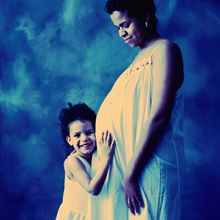Vol. 3, No. 2 • Spring 1999
Working with Birth Parents:
Interview with Brenda Crider
by John McMahonInteracting with birth parents can be one of the hardest parts
of being a foster parent. It�s not hard to figure out why. When
you have a child in your home who has clearly suffered at the
hands of her parents, it makes sense that it will be hard to treat
those parents with respect when you encounter them. Yet, this
is exactly what foster parents must do, every day.To get some insight into how and why foster parents work with birth parents I contacted Brenda Crider. An energetic and outspoken past president of the Iredell County (North Carolina) Foster Parent Association, Brenda has fostered between 15 and 20 foster children (including respite). She is also known for her experience in working with birth parents�she has talked with many foster parents on this subject and even presented a workshop on this topic at a North Carolina conference.
Seeing things from the other side
Brenda cites her experience as a volunteer for Iredell County�s version of a child abuse prevention team as one factor that gives her a different perspective when it comes to working with the parents of her foster children. Part of her work involved visiting homes where conditions were far from ideal.She found that, regardless how bad the situation was, �when I entered the house as a stranger, the kids still went and hid behind their parent�s shirttail. Even if they�ve been hurt or abused, they�re still a family. There are exceptions to this, of course, but regardless of what has happened, kids still love their parents.�
Like most other foster parents, she sometimes comes to the conclusion that a certain child should not be returned home. But, she adds, �that doesn�t stop me from sending pictures, talking to [the parents], and listening to them. Their love for the children and the children�s love for them is still there, and I would never do anything to change that.�
As a result of this experience and this insight, Brenda finds that she seldom hesitates when it comes to developing relationships with birth parents. One way she does this is by performing small but important acts. For example, she sometimes drives her foster children to visitations if it�s more convenient geographically for her than the child�s social worker �for example if the birth parent lives at Brenda�s end of the county and DSS is at the other end.
Keeping the relationships clear
As a way of supporting parent-child ties, Brenda says, �I never run parents down to their kids. When these kids know you accept their parents, regardless of what they�ve done, the kids are easier to deal with. This makes sense. Kids are looking for approval, and if you disapprove of their parents then they think you disapprove of them, too.�As we talk, Brenda calls to mind a child and a scene that demonstrates how beneficial it is for a child when birth and foster parents have a sound relationship. When this particular child came to her house he hardly talked at all. But, she says, �He started talking a lot more after just a few weeks at my house�I�d say it was in self-defense, because I talk so much!�
�Anyhow, after a child visits with his or her birth parent I like to talk about it with them. I ask them what it was like and what they did together. Well, after one visit I asked this little boy what the visit was like. He held up two fingers and smiled and said �TWO!��
�When I told him I didn�t understand he held up two fingers again and said �MAMA� and �BRENDA!� This was his way of telling me how much he liked seeing the two of us together, how comfortable he was with it.� This same child was later reunited with his mother.
A tough case
After we talked, I found myself wondering in the back of my mind, but how do you treat birth parents with respect when they don�t respect you?A few days later Brenda called me with what she called an example of the best it can be working with a birth parent, an example that answered my question.
�There was a child placed in my home,� she began. �The mother was very hostile to me, to DSS, and to the whole system. The first time I had an opportunity to meet her I opted not to. I had heard that she was not open to our first encounter being at DSS, that she wanted to meet in a more neutral place.�
Yet, over time things cooled down. They attended assessment meetings together, and they interacted several times when the child had doctor visits and other appointments. Before long, their relationship was so good that the social worker didn�t need to be around to �mediate� when Brenda and the birth mom were together.
Meanwhile, the child�s parents did everything they needed to do to get their child back. After a short time, this child, too, returned home.
Now the whole family comes by to visit Brenda once a month or so. �That�s a big difference from how things started out between us,� she laughs.
Although she had a lot of concrete suggestions for working with birth parents�even angry ones�the most important thing I took away from talking with Brenda Crider was not a how but a why: forging relationships with birth parents is worth it because it is the right thing for children. Although she didn�t say this in so many words, Brenda�s message was loud and clear: Start with this principle, and you will almost always find a way to make it work.
Copyright � 2000 Jordan Institute for Families

